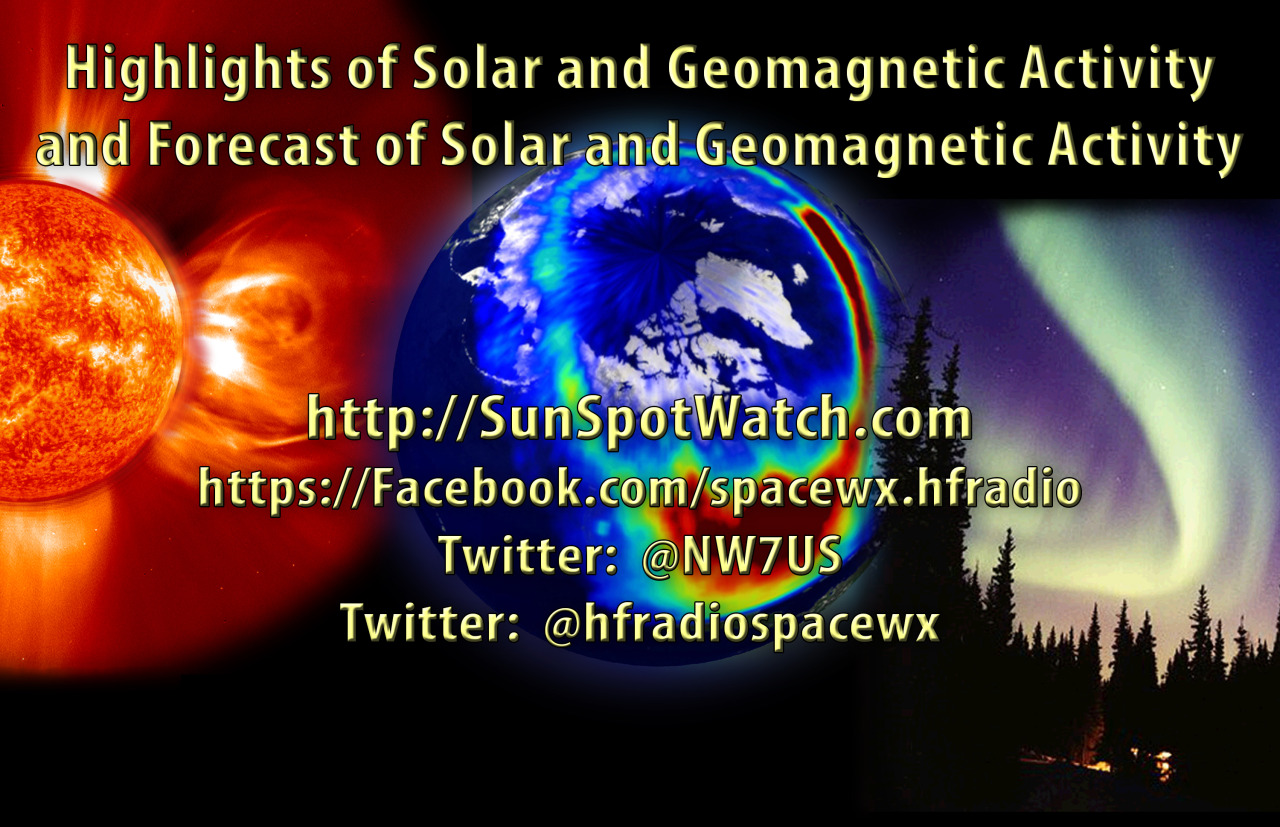 Weekly Propagation Summary – 2016 May 02 16:10 UTC
Weekly Propagation Summary – 2016 May 02 16:10 UTC
Here is this week’s space weather and geophysical report, issued 2016 May 02 0421 UTC.
Highlights of Solar and Geomagnetic Activity 25 April – 01 May 2016
Solar activity was reached low levels this period. A total of seven low-level C-class flares were observed through the week, four of which were from Region 2535 (N05, L=124, class/area=Hax/60 on 24 Apr) and the remaining three were from Region 2539 (N16, L=084, class/area=Eai/100 on 01 May). A pair of coronal mass ejections (CMEs) associated with flare activity from Region 2535 were observed in LASCO C2 coronagraph imagery at 28/0216 UTC and 28/0636 UTC, but did not impact Earth as anticipated.
No proton events were observed at geosynchronous orbit.
The greater than 2 MeV electron flux at geosynchronous orbit reached moderate levels on 25-30 Apr and was at normal levels on 01 May.
Geomagnetic field activity was quiet on 25, 28-29 Apr, quiet to unsettled on 26-27, 30 Apr, and quiet to active on 01 May.
Forecast of Solar and Geomagnetic Activity 02 May – 28 May 2016
Solar activity is likely to be low with a slight change for M-class flares (R1-R2 (Minor-Moderate) Radio Blackouts) on 03-16 May due to return of old Region 2529 (N09, L=342) which produced an isolated M6 flare (R2-Moderate Radio Blackout) last rotation. Very low to low levels of solar activity are likely through the remainder of the period.
No proton events are expected at geosynchronous orbit.
The greater than 2 MeV electron flux at geosynchronous orbit is likely to reach high levels on 11-13 May with normal to moderate levels expected for the remainder of the outlook period.
Geomagnetic field activity is expected to reach G1-G2 (Minor-Moderate) geomagnetic storm levels on 02 May due to an enhanced solar wind environment and prolonged southward magnetic field orientation. G1 (Minor) geomagnetic storms are likely on 11 and 20 May with active levels likely on 10, 12, 14, 19 and 21 May due to the influence of recurrent coronal hole high speed streams (CH HSSs). Quiet to unsettled field activity is expected throughout the remainder of the period.
Don’t forget to visit our live space weather and radio propagation web site, at: http://SunSpotWatch.com/
Live Aurora mapping is at http://aurora.sunspotwatch.com/
If you are on Twitter, please follow these two users: + https://Twitter.com/NW7US + https://Twitter.com/hfradiospacewx
Get the space weather and radio propagation self-study course, today. Visit http://nw7us.us/swc for the latest sale and for more information!
Check out the stunning view of our Sun in action, as seen during the last five years with the Solar Dynamics Observatory (SDO): https://www.youtube.com/watch?v=zXN-MdoGM9g
We’re on Facebook: http://NW7US.us/swhfr














